Everything you need to know about zucchini
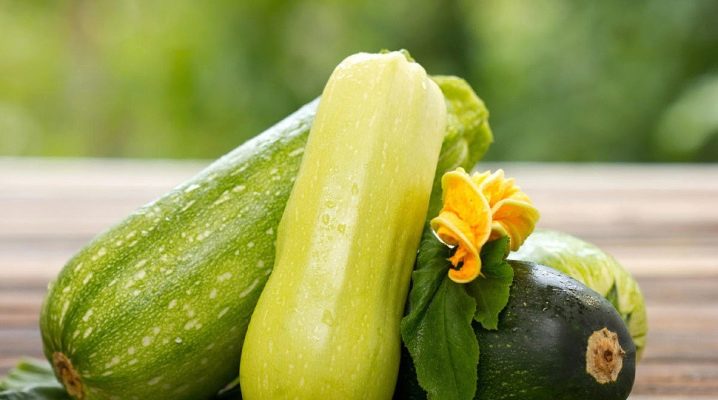
Modern gardeners grow on their plots more than a wide range of vegetable crops. At the same time, many beginners try to learn everything there is to know about zucchini and their breeding. We are talking about a healthy and tasty vegetable that contains vitamins and useful trace elements. Today, the unique properties of these vegetables are used in the preparation of children's, dietary and medical diets, as well as in modern cosmetology.
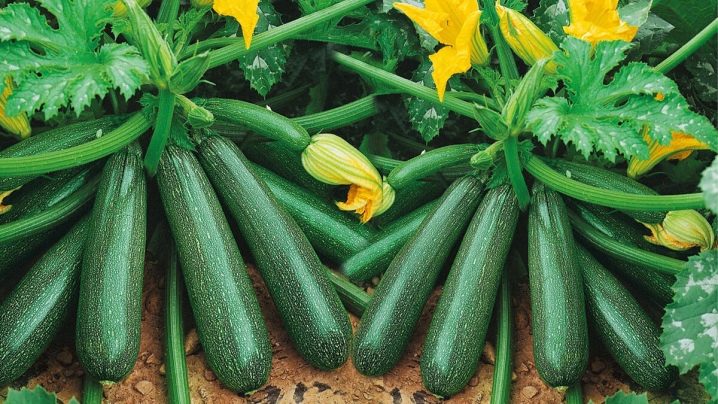
general description
Zucchini is an annual plant that belongs to the Pumpkin family and the Dicotyledonous class. You can distinguish it from the bush pumpkin, which is its closest relative, by its early maturity and multiplicity. In addition, the structure of the bushes, flowers and the fruits themselves will differ to some extent. This is especially true for modern hybrids. It is important to note that all varietal varieties of the described culture are very demanding on temperature conditions. So, zucchini seeds will not sprout if the thermometer drops below +14 degrees. At the same time, for active growth and full development, it must be at least +25 degrees.
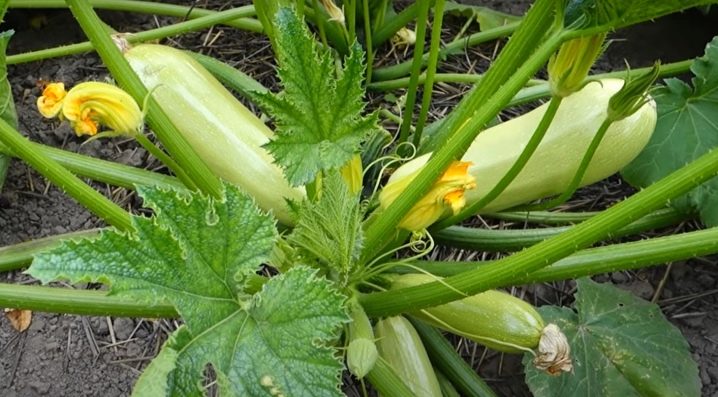
Zucchini belongs to bush and climbing perennial (in temperate climates it is cultivated as an annual) plants. The main features include the following parameters and characteristics.
- Powerful stem that can be erect or creeping.
- Large 5-lobed leaf plates with massive petioles and thorn-like pessaries.
- Powerful, developed and maximally active root system.
- Quite large, bell-shaped and bright yellow flowers are male and female.
- Fruits are cylindrical (sometimes oval) in shape. Most often they are elongated, but in some cases they can be rounded. Depending on the variety, the color varies in a fairly wide range.
- The pulp is white and creamy. At the stage of technical ripeness, it is tender, but closer to the testicles it will be coarser, and also slightly sweet or completely unsweetened.
- The seeds are creamy and have lateral rims.
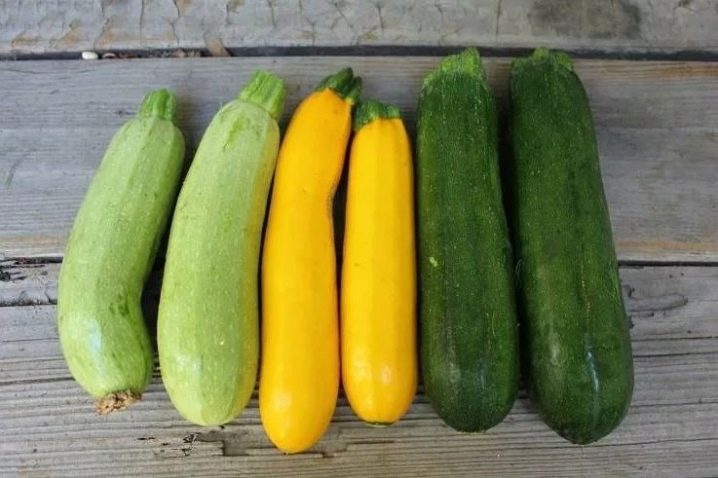
It is known that zucchini is a very useful product, and such unique characteristics of the fruits are due to their chemical composition. It includes potassium (at least 250 mg for every 100 g), as well as sodium, calcium, copper, iron, magnesium and phosphorus. In addition, we are talking about a complex of organic acids and vitamins. Do not forget that the fruits are rich in pectins and minerals. Given the low protein content, zucchini can be considered a dietary product, in each kilogram of which there are no more than 270 calories.
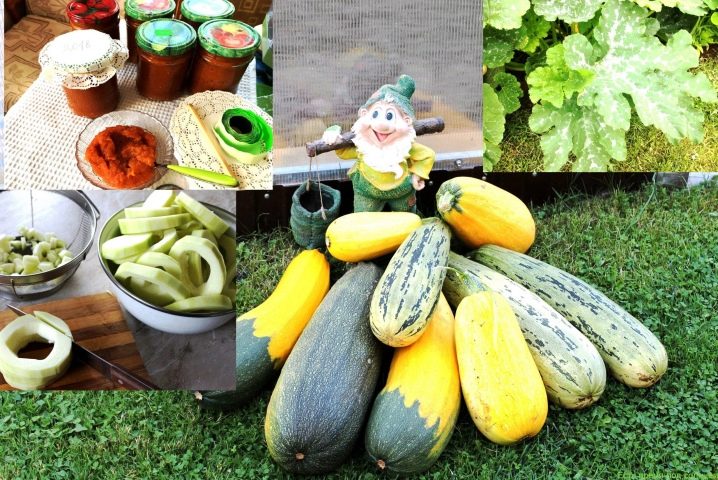
Origin story
The described culture appeared in Europe, and then in Russia, arriving from South America (while zucchini also grow well in Central and North). Christopher Columbus brought them under the guise of one of the interesting varieties of pumpkin back in the 15th century. By the way, in America, where the plant comes from, they were previously used as a popular food product for many centuries. It is noteworthy that for 3 centuries the described plant was cultivated in Italian botanical gardens and was considered an ornamental representative of the flora. And only in the 18th century it began to be cultivated as a food product.
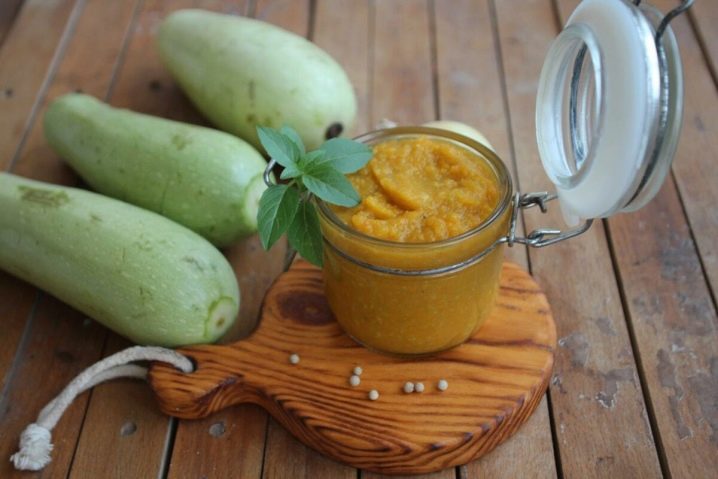
The appearance of the pumpkin relative in question on the territory of Russia fell on the 19th century, and for the first time he arrived from Greece and Turkey. By the way, translated from Turkish "kabak" means "pumpkin". Initially, an exclusively white-fruited species was cultivated. Varieties with yellow, green, as well as striped and speckled fruits, which have long been grown by Italian farmers, appeared in our area not so long ago. Zucchini was widely used in Russia just a few decades ago. Their main advantages, in comparison with the white-fruited relative, include high yield, as well as compactness of the bushes.
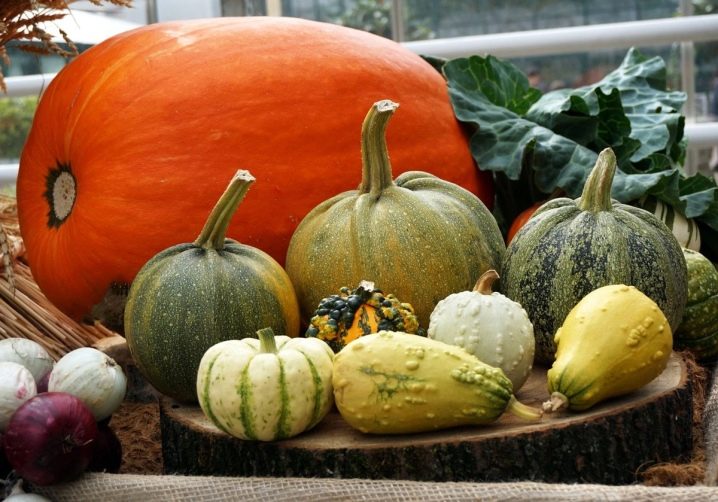
Popular varieties
Today, you can find more than a wide range of zucchini on sale (in seeds, seedlings and fruits). And we are talking about the following varietal varieties of representatives of the large pumpkin family:
- classic white-fruited;
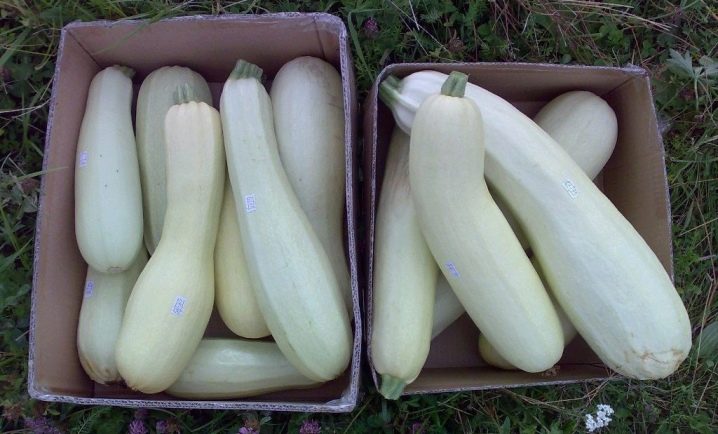
- multi-colored zucchini;
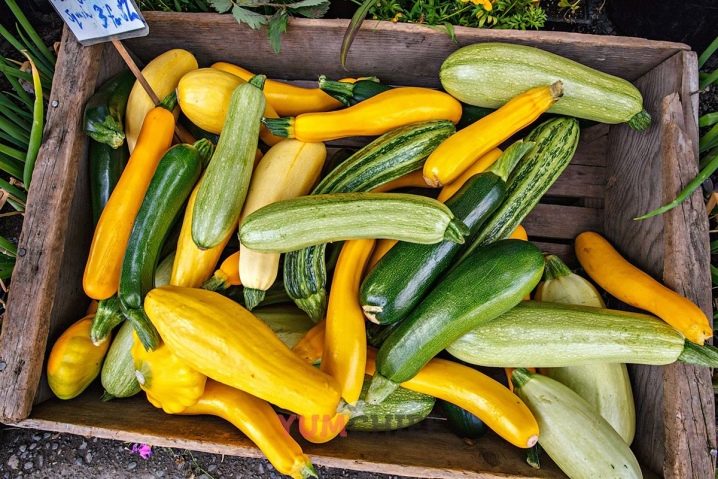
- hybrid forms of the F1 category, characterized by the evenness of the zucchini themselves and record productivity.

The most popular white-fruited varieties include the following options.
- "White Swan" - an early ripe species with a high yield. Also, the good keeping quality and transportability of vegetables should be ranked among the obvious advantages.
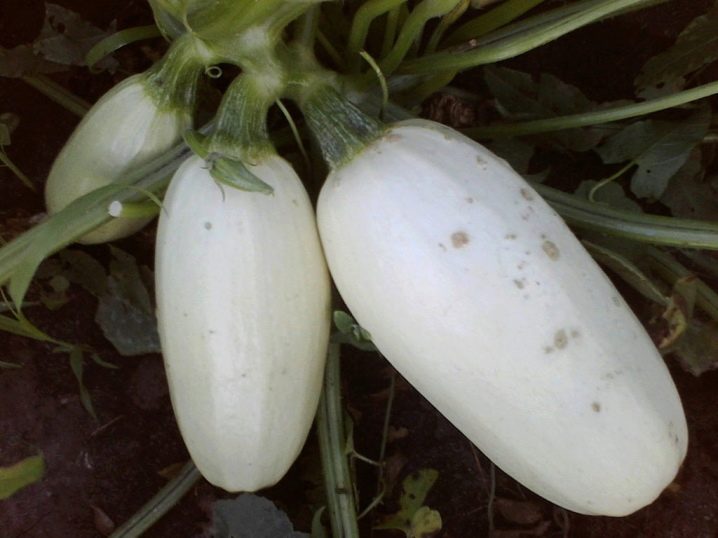
- "Anchor" - an early ripe zucchini variety with bark and pulp, which have a light yellow color. The main feature is the increased carotene content. This type is recommended by specialists in the context of dietary and baby food. In parallel, it is worth focusing on the duration of storage and good transportability of the fruit.
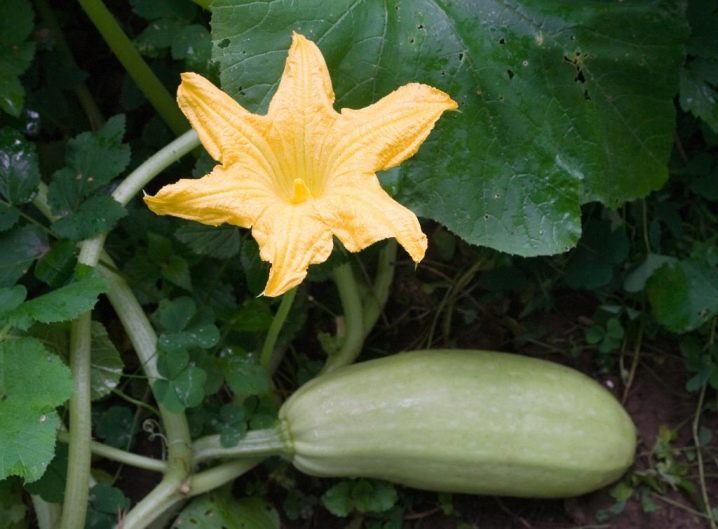
- "Video clip" - ultra early ripening variety, characterized by increased resistance to low temperatures.
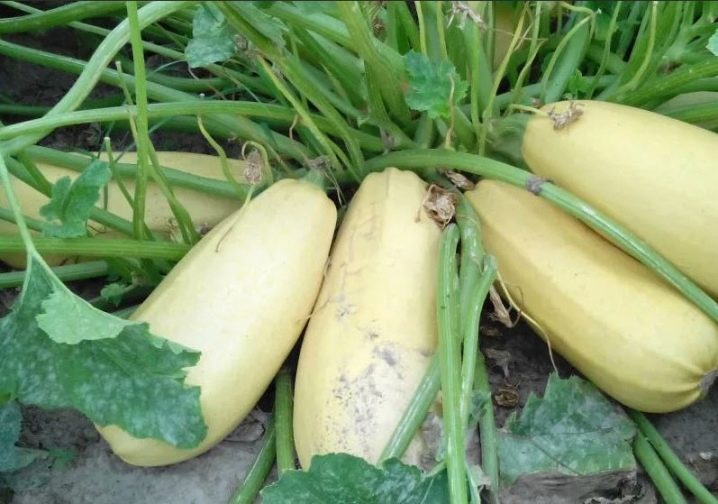
- "Gribovskie 37" - a popular early varietal variety of zucchini. The main distinguishing feature is the cylindrical light green fruits, which are successfully used for conservation.
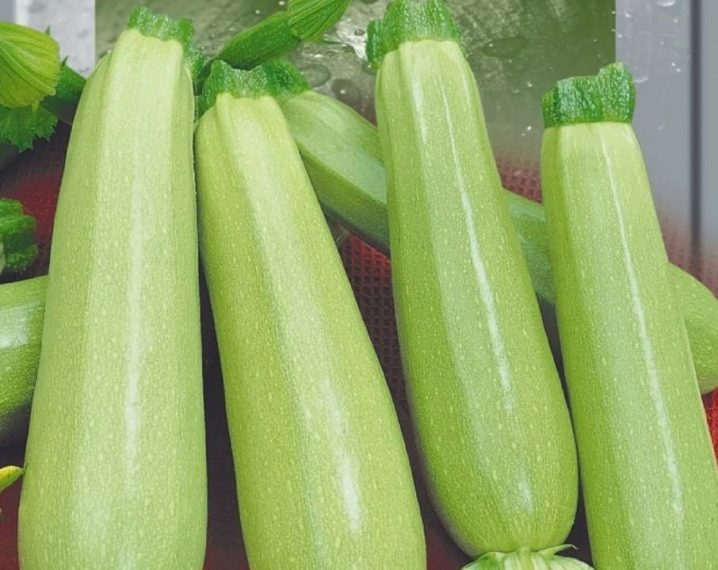
Common white-fruited hybrids.
- "Nemchinovsky F1" - a high-yielding variety that is compact and has fruits that weigh up to 1.7 kg.
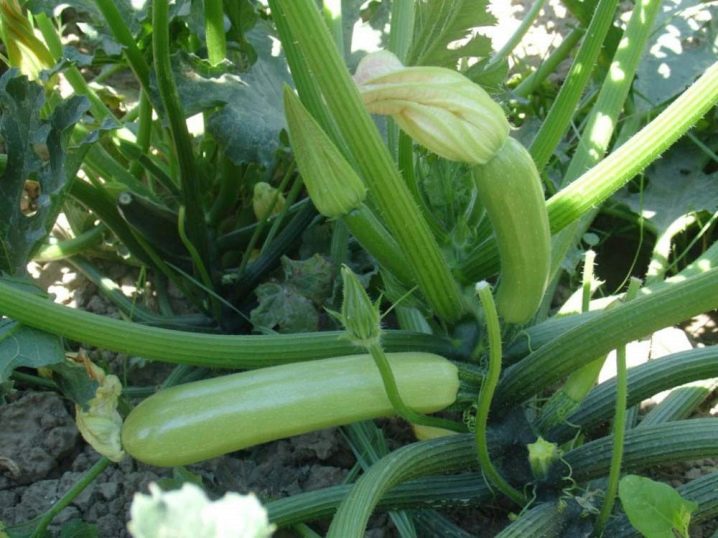
- "Belogor F1" - a variety that was one of the first bred by domestic breeders. It belongs to the early maturing category and is characterized by properties such as increased resistance to infections and cold resistance.
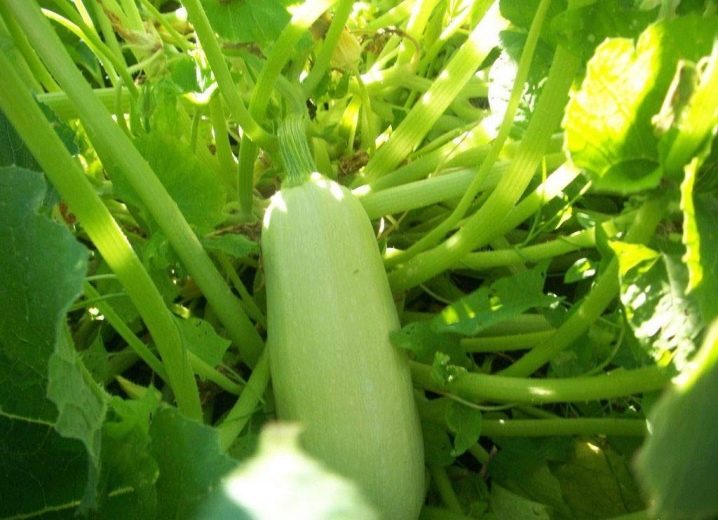
In accordance with the current statistics, numerous reviews and reviews, the following varieties are the most common types of zucchini that are grown by vegetable growers today.
- Astoria - a high-yielding variety, which can be distinguished by its dark green cylindrical and elongated fruits.
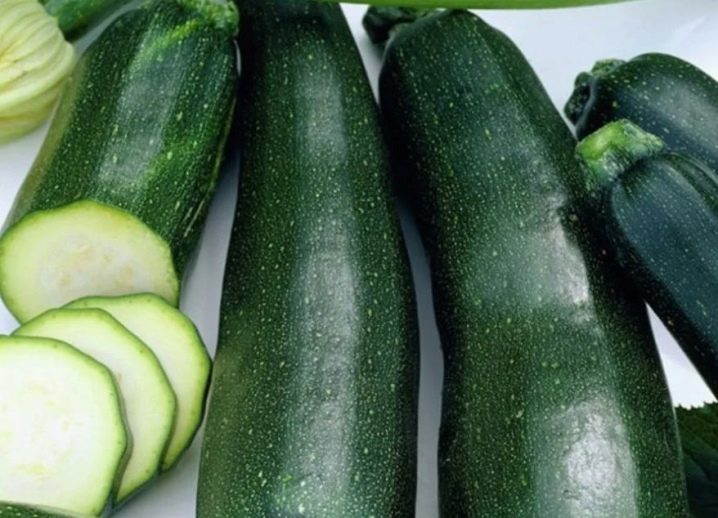
- "Zebra" - an early variety of zucchini, which has light green fruits with pronounced dark stripes and is characterized by high cold resistance. Zucchini weight reaches 0.9 kg.
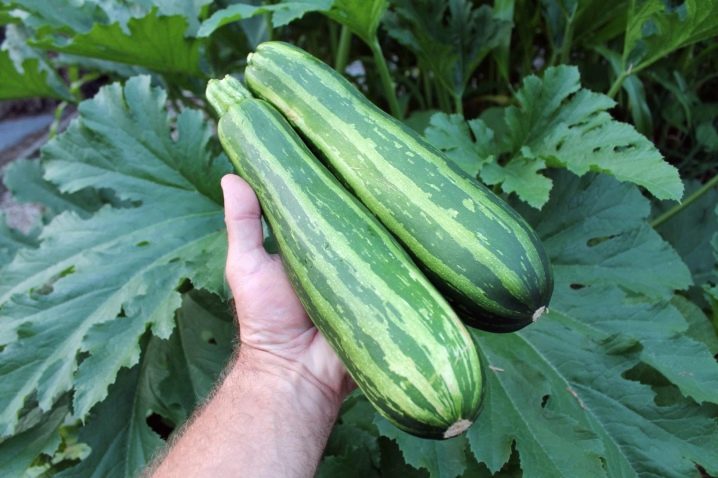
- "Aeronaut" - a variety that has a dark green fruit color with small light spots. The peculiarities include the absence of a thorny edge on the petioles and the leaf blades themselves. It is also important to note that the plant is unpretentious to the ground.
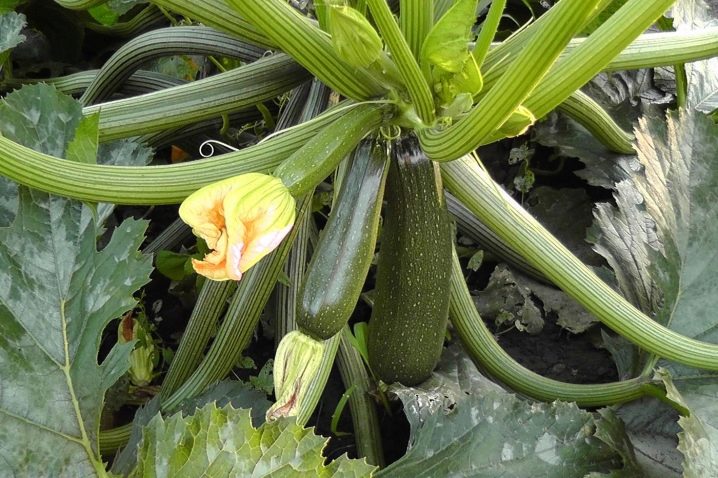
Popular hybrid forms of zucchini.
- "Souvenir" - a high-yielding early ripening varietal variety with medium-sized oval fruits of a creamy greenish color with dark, blurred stripes.
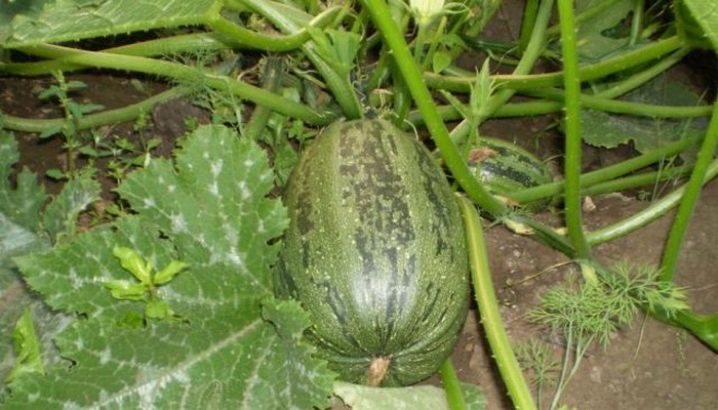
- "Golda F1" - a productive species with golden zucchini, belonging to the category of early ripening.
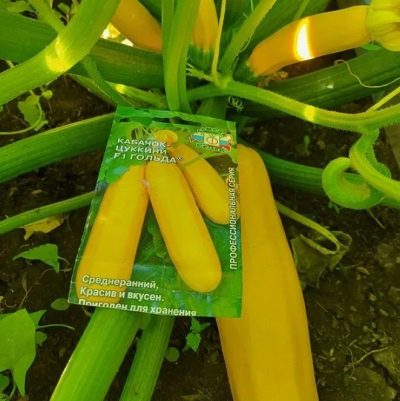
- "Gold Cup" - a type of zucchini, distinguished by the power of the bushes. It is worth noting the outstanding taste of the fruit at all stages of ripening. An equally important point is good keeping quality.
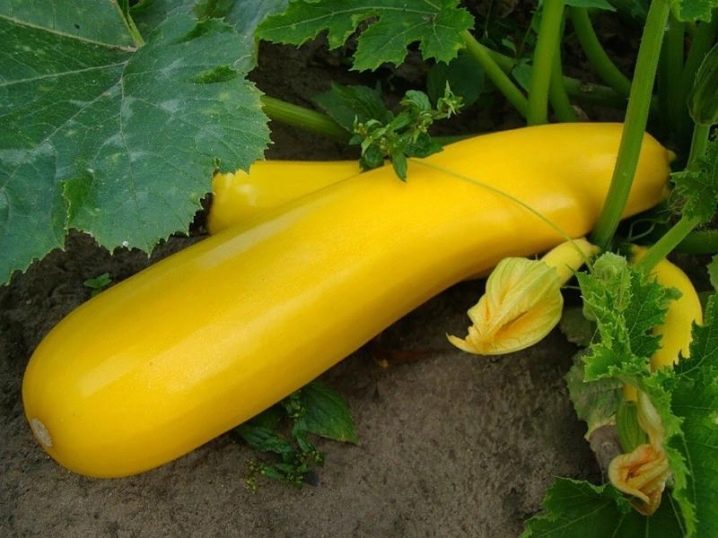
It is worth paying attention to a relatively young variety of zucchini, called "Tsukesha". One of its clear advantages is that it is equally well cultivated both in black earth regions and in the non-black earth zone. The cylindrical fruit has a smooth skin. The variety stands out due to its interesting colors.The dark green fruit with a speckled pattern has a white, gristly, but rather tender flesh.
These zucchini are characterized by long shelf life and increased resistance to rot... According to reviews, the palatability of the pulp allows you to eat the fruits fresh. Of course, we are talking about the earliest fruits, while the later and larger zucchini will be good ingredients in various dishes.

Landing
For seedlings, seeds are planted from mid-March to mid-last spring month. You can transfer young growth to open ground in 25-30 days (most often it falls at the end of May - beginning of June).
It is important to take into account the climatic features and weather conditions of a particular region.
The described vegetable crop today is grown both by seedlings and by planting seeds directly into the ground in a permanent place. In the first case, it is recommended to use peat pots or other separate containers for each unit. The soil mixture for seedlings includes:
- sawdust - 1 part;
- sod land - 2 parts;
- humus - 2 parts;
- peat - 6 parts.
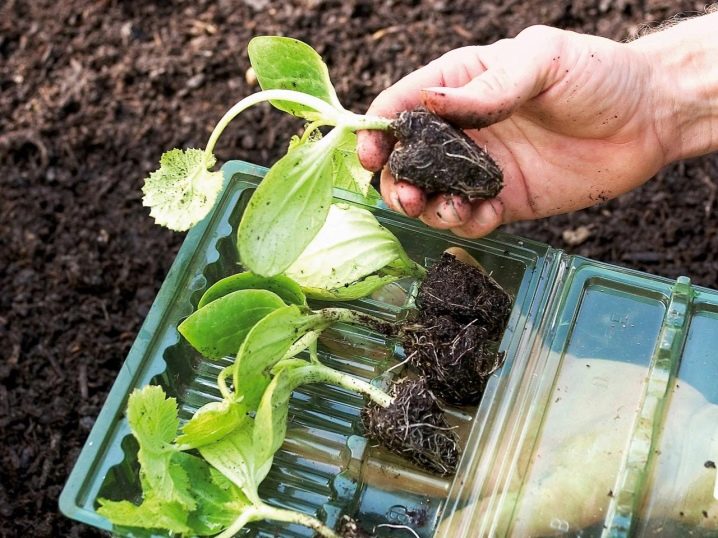
The pots are filled with soil and spilled with hot water or a 0.5% solution of potassium permanganate. The seeds are buried 2-3 cm, so that the sprouting root is directed downward. Transfer to open ground is performed after 2-3 leaves appear in the sprouts. The site should well lit and well protected from the wind... Taking into account the size of adult bushes, the intervals between holes and rows should be 1 and 1-1.5 meters, respectively. The optimal time and conditions for landing are early morning and cloudy weather.
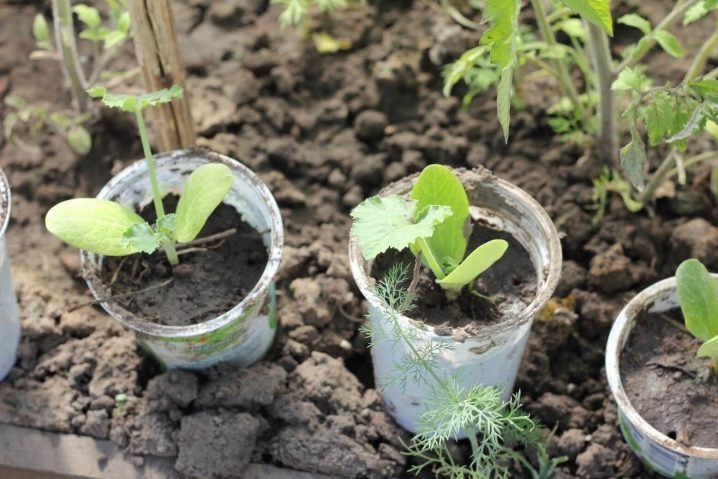
Care
After the appearance of the first shoots or planting seedlings in open ground, you will have to take care of the plants according to the standard scheme. The list of mandatory agrotechnical practices includes:
- timely watering;
- loosening the soil;
- top dressing;
- weeding.
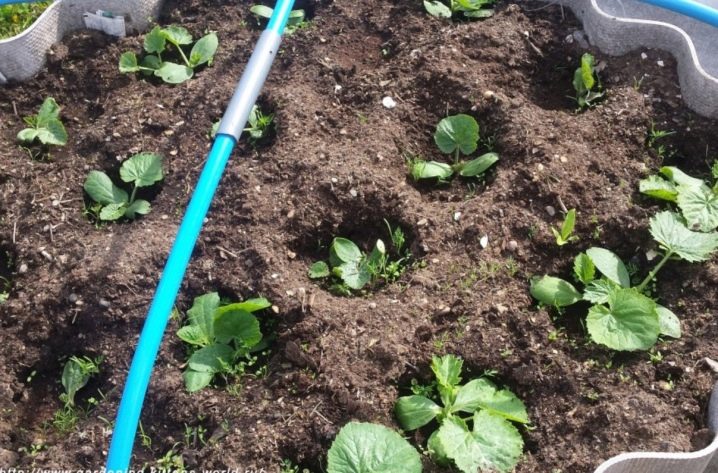
At the stage of formation of 4-5 leaves, the stem must be earthed. In a similar way, the development of additional (lateral) elements of the root system is stimulated.
Regular loosening of the soil with a shallow depth and the removal of weeds is required until the moment when the leaf plates close. An equally important point is to ensure free access for pollinating insects. For this purpose, it is recommended to remove a few middle leaves. In some cases, to activate fruiting, the main shoot is pinched on the lateral processes.
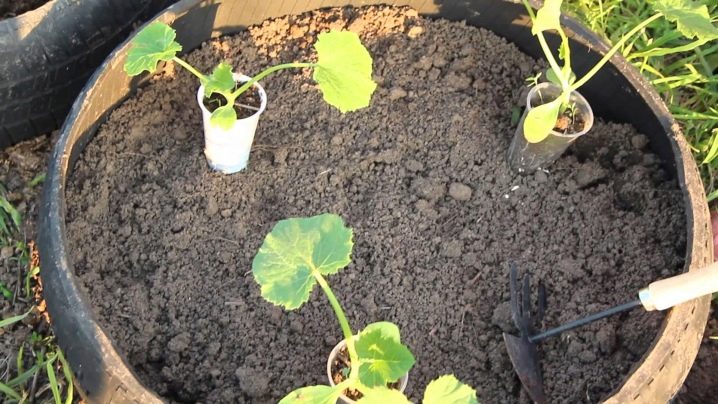
Watering
It should be noted that in the regions of the middle lane, irrigation is not used for the industrial cultivation of zucchini. However, a prolonged lack of moisture negatively affects the volume and quality of the crop. Gardeners are recommended to regularly (at least once a week) water the culture with warm water. This is most important after planting seedlings, as well as for the stages of active flowering and the formation of ovaries.
The best time for irrigation is the second half of the day. Weather conditions will be an equally important factor. During flowering and fruiting, especially in the heat, watering should be abundant. The main thing here is that the soil is saturated with moisture to a sufficient depth. Zucchini bushes should be watered strictly at the root. Average water consumption is 5 liters per planting unit before the flowering stage and up to 10 liters during fruiting.
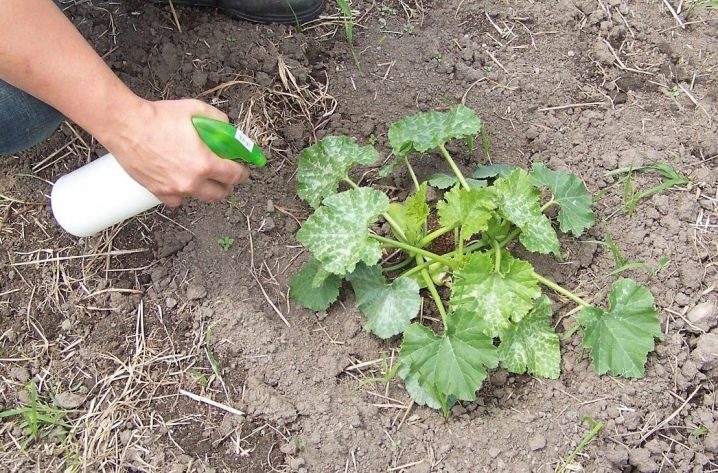
Top dressing
The key to obtaining a plentiful and high-quality harvest will be timely and competent fertilization. Experienced gardeners advise weekly feeding actively developing vegetables with the second number of the Meatlider mixture, the composition of which is as follows:
- nitrophoska - 6 kg;
- urea - 1 kg;
- potassium and magnesium sulfate - 1 kg each;
- boric and molybdic acids - 15 g each
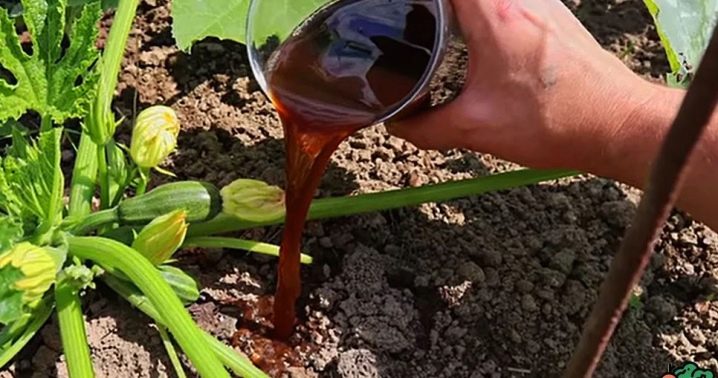
There is also an alternative fertilization in two stages. The first top dressing should be done before the flowering phase begins. The consumption of the nutrient mixture is 1 liter per zucchini bush, and it includes:
- purified water - 10 l;
- superphosphate - from 40 to 50 g;
- potassium nitrate - from 20 to 30 g;
- ammonium sulfate - 25 g.

The second stage is carried out before the beginning of the fruiting stage. In this case, you will need a solution, the components of which are:
- water - 10 l;
- potassium nitrate - 40-50 g;
- superphosphate - 40-50 g.
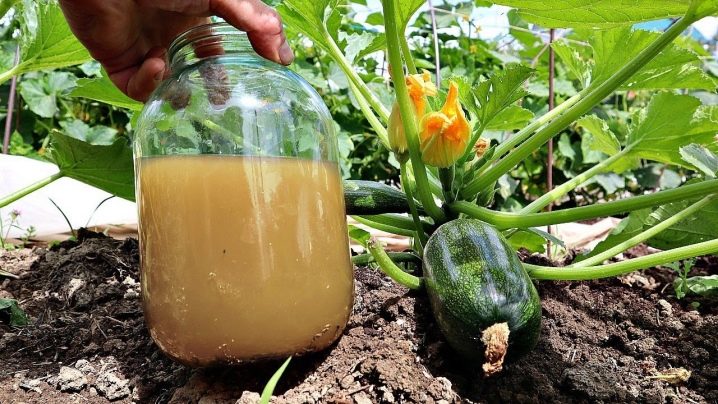
The mixture is introduced at the rate of 1.5 liters per plant. Also, zucchini can be fed with solutions of bird droppings (1:20) and mullein (1:10), the consumption of which is 2 liters per bush within the first and 4 liters - with the second feeding.
Harvesting
The first fully ripened zucchini are removed after 35-45 days from the moment the young animals are planted in the open ground. These fruits are used to prepare a wide range of dishes, as well as for preparations for the winter. If we are talking about long-term storage of fresh vegetables, then when harvesting, the fruits must be separated from the bush along with the stalk.
After that, it is recommended to wrap each zucchini in a bag or cling film with pre-made holes for ventilation.
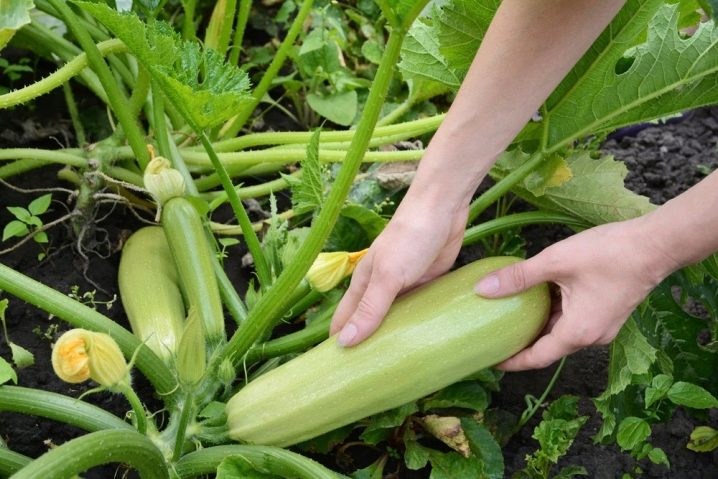
Possible growing problems
Unfortunately, when grown both in the open field and in greenhouse conditions, zucchini are susceptible to a number of diseases and attacks of harmful insects. So, for example, plants cultivated under the film and in greenhouses are often attacked by a spider mite, and their seedlings are attacked by a sprout fly. In addition, along with all pumpkin crops, zucchini suffer from parasites such as melon and whitefly aphids.
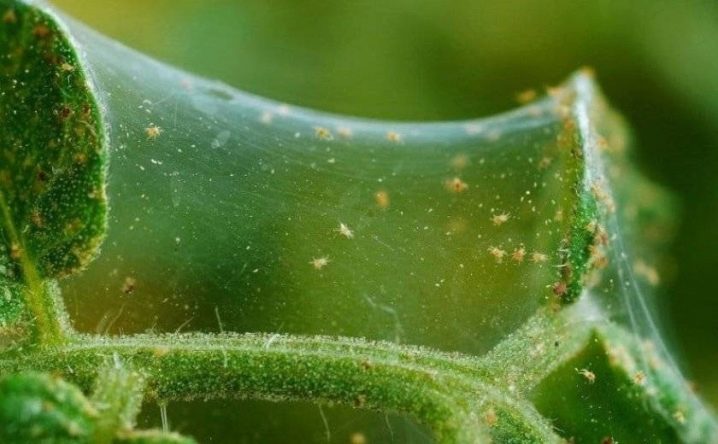
If we talk about diseases, then most often gardeners have to deal with:
- anthracnose;
- rot (mostly white);
- powdery mildew.

It is important to remember that one of the key characteristics of the described culture is its record early maturity. Based on this, the use of chemicals to combat infections and pests is highly undesirable.
The list of effective preventive measures includes:
- deep digging of the site, which is carried out in the fall;
- constant alternation of cultivated plants;
- timely destruction of affected individuals, as well as plant debris.
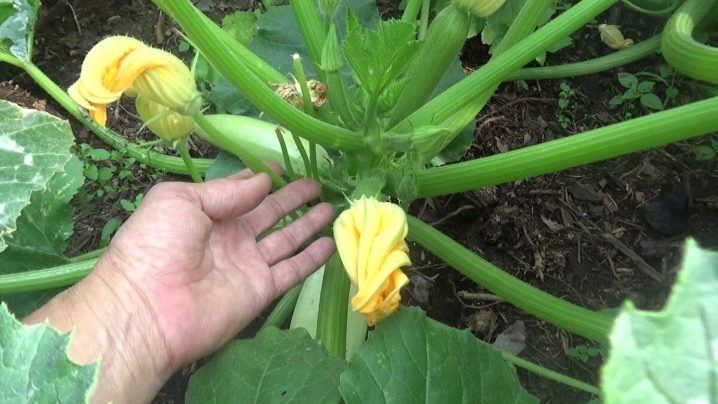
When it comes to greenhouses and greenhouses, it is highly recommended control temperature, since sharp drops in indicators are unacceptable. In parallel, it is important to periodically replace and disinfect the soil. The seed should also be processed.
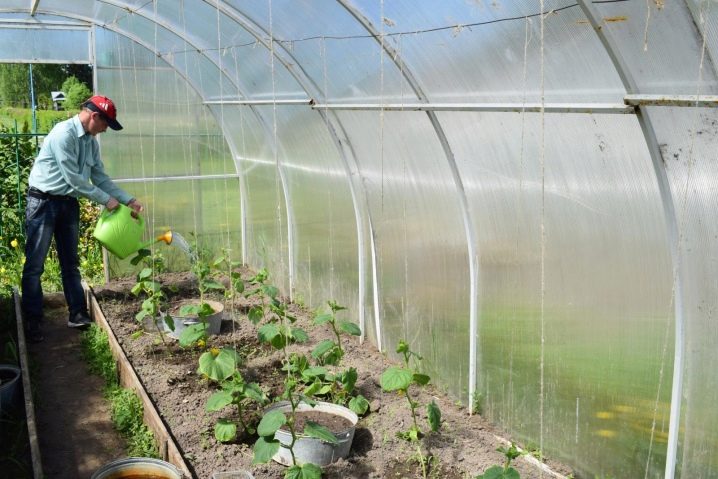
Given the undesirability of using chemistry, modern vegetable growers successfully use well-proven folk remedies. And in this case we are talking about a soap solution, as well as infusions of tops of tomatoes, garlic and onion peel. In extreme cases, a single treatment of zucchini with insecticides and the use of substances such as copper oxychloride and colloidal sulfur are permissible. It is important to take into account that we mean a massive attack of harmful insects in the early stages of plant development. In parallel, we can talk about approved preparations aimed at combating gray mold, powdery and downy mildew, as well as other fungi.
For information on how to get a lot of zucchini from one bush, see the next video.








The comment was sent successfully.